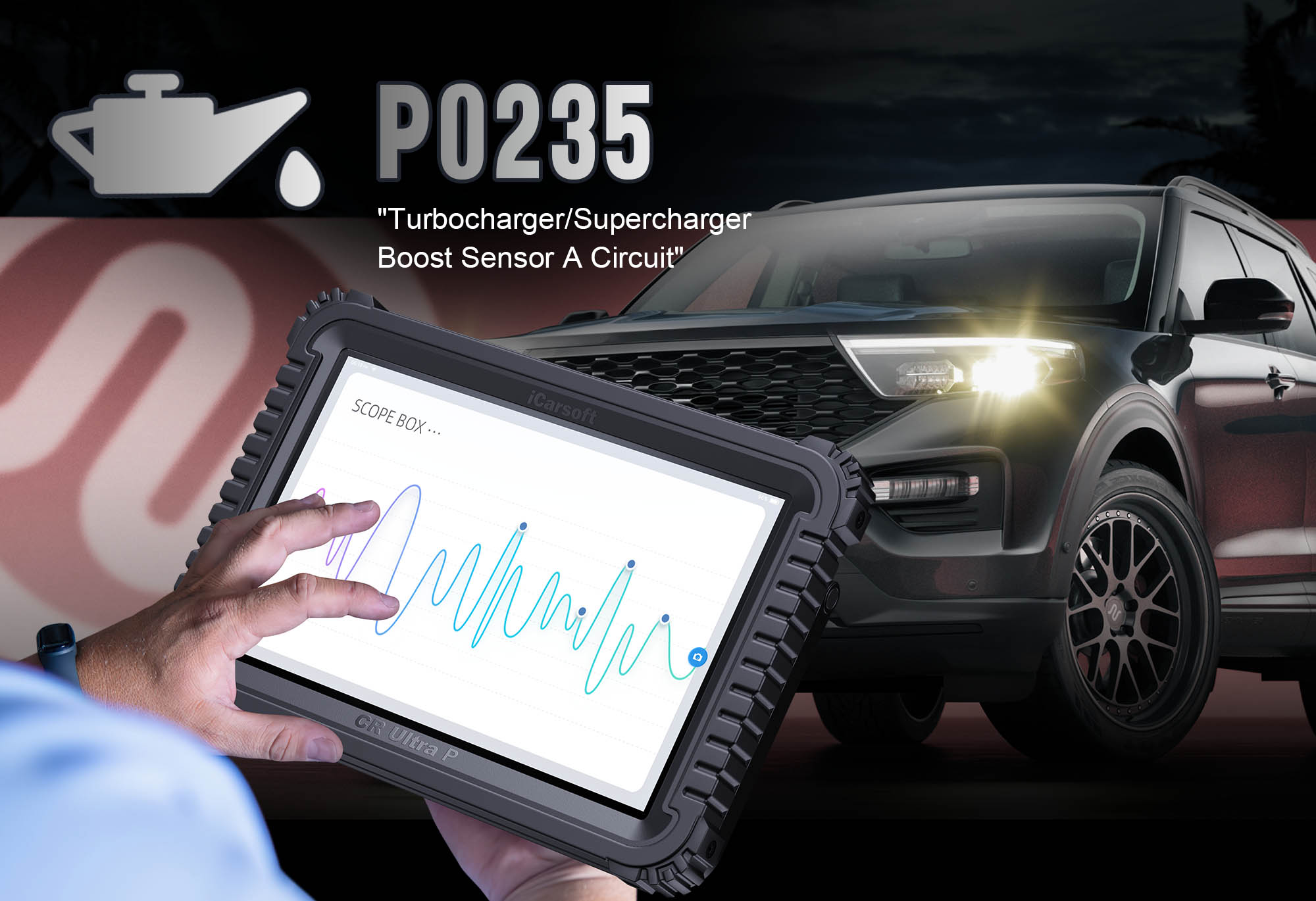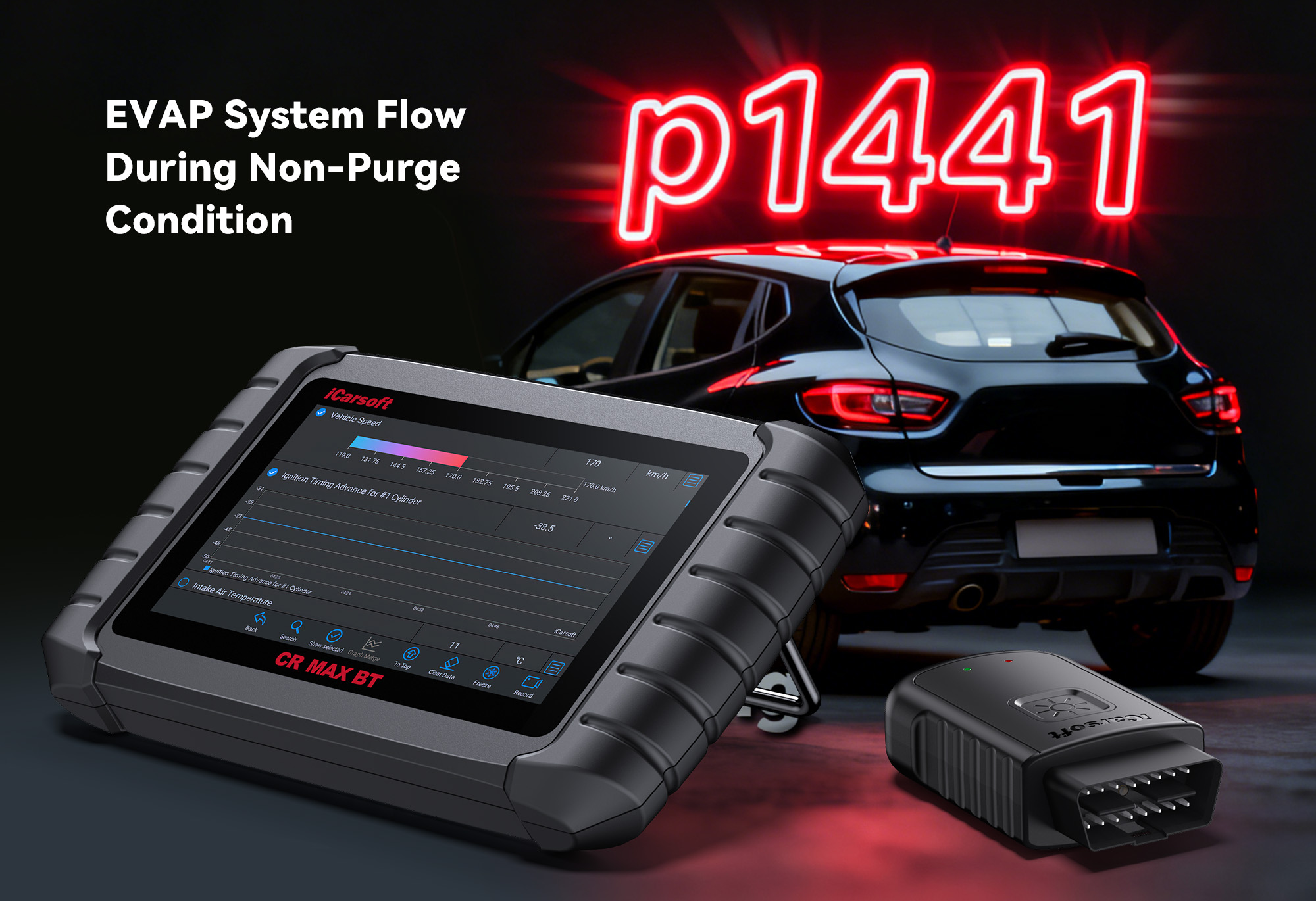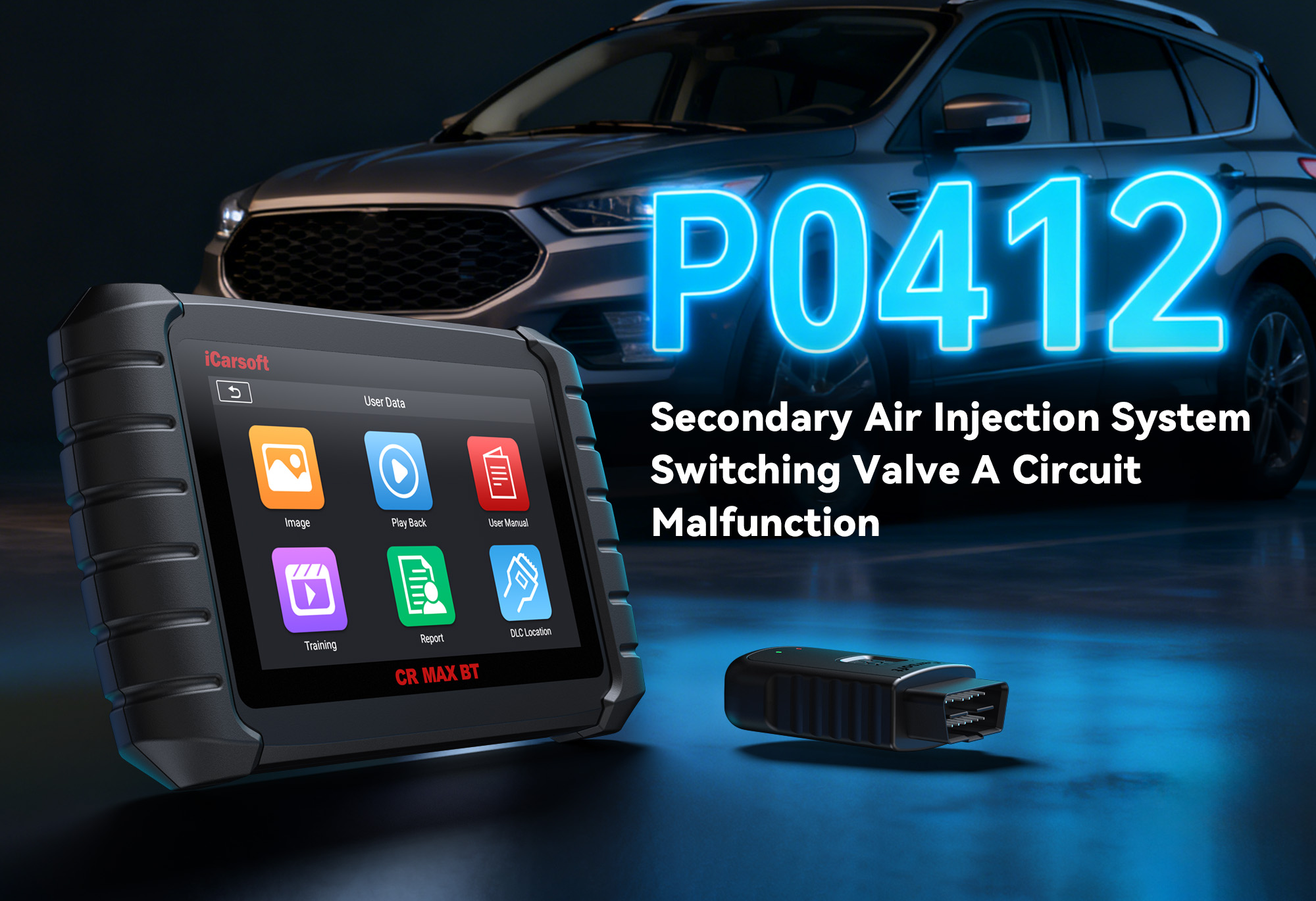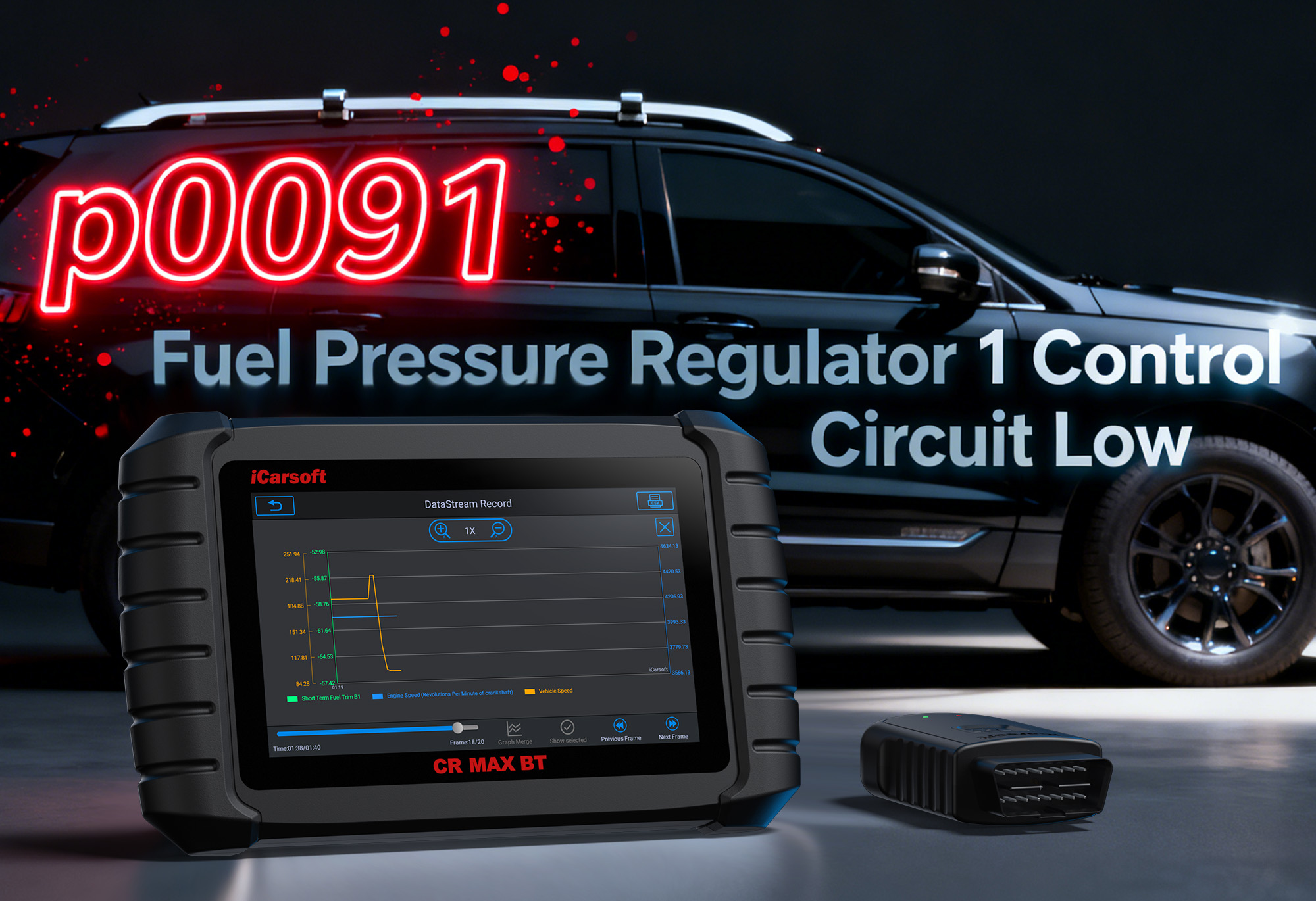If your check engine light suddenly illuminates and a quick scan reveals the P0235 code, don’t panic—but don’t ignore it either. This common trouble code points to a specific issue with your vehicle’s turbocharger or supercharger system, and addressing it promptly can save you from costly repairs down the line. In this guide, we’ll break down what P0235 means, its symptoms, root causes, and how to diagnose it effectively—plus, we’ll share the best tool to simplify the process.
What Is the P0235 Code?
The P0235 code is defined as “Turbocharger/Supercharger Boost Sensor A Circuit High.” It triggers when your vehicle’s Engine Control Unit (ECU) detects that the voltage from the boost pressure sensor (also called the manifold absolute pressure sensor, or MAP sensor in some setups) is higher than the expected range. This sensor monitors the pressure in the intake manifold, helping the ECU adjust fuel delivery and ignition timing for optimal performance. A “high circuit” signal means the ECU is receiving abnormal voltage, disrupting this critical balance.
Common Symptoms of P0235 Code
If your vehicle is throwing the P0235 code, you may notice one or more of these symptoms:
-
Illuminated check engine light (the most obvious sign).
-
Reduced engine power or “limp mode” to protect the engine.
-
Poor fuel efficiency, as the ECU struggles to adjust fuel delivery.
-
Unusual noises from the turbocharger/supercharger (e.g., whistling or grinding).
-
Hesitation or rough idling during acceleration.
What Causes the P0235 Code?
Pinpointing the cause of P0235 requires checking several components of the boost sensor circuit. Common culprits include:
-
A faulty boost pressure sensor: Over time, sensors can wear out or become contaminated with oil or debris.
-
Damaged wiring or connectors: Rodents, corrosion, or heat can fray wires or loosen connections in the sensor circuit.
-
Short circuit in the sensor wiring: A short can send excessive voltage to the ECU, triggering the code.
-
Faulty ECU: In rare cases, the engine control unit itself may misinterpret signals, though this is less common.
-
Boost leak: A leak in the turbo/supercharger system can cause pressure imbalances, confusing the sensor.
Important Safety Note: Working on turbocharged systems requires caution. Ensure the engine is completely cool before inspecting components, as turbochargers can reach extremely high temperatures during operation.
How to Diagnose P0235 Code at Home
Diagnosing P0235 doesn’t always require a trip to the mechanic—with the right tools, you can tackle it yourself. Here’s a step-by-step approach:
-
Read the code with an OBD2 scanner
Start by confirming the P0235 code using a reliable scanner. This helps rule out misdiagnoses from similar codes like P0237 (circuit low).
-
Inspect wiring and connectors
Check the sensor’s wiring harness for frays, cracks, or corrosion. Disconnect the sensor connector and look for bent pins or moisture—these are common culprits.
-
Test sensor voltage
With a multimeter, measure the voltage at the sensor connector (consult your vehicle’s repair manual for specs). Abnormal readings may indicate a faulty sensor or wiring issue.
-
Check for boost leaks
Inspect hoses, intercoolers, and gaskets for leaks using a smoke machine or soapy water (bubbles indicate leaks).
The Best Tool for Diagnosing P0235: iCarsoft CR Ultra P
For accurate and efficient diagnosis, a professional-grade OBD2 scanner is a must. The iCarsoft CR Ultra P stands out as a top choice for DIYers and mechanics alike. Designed to work with most makes and models, this scanner not only reads and clears P0235 and other trouble codes but also provides live data streams—so you can monitor boost pressure, sensor voltage, and ECU signals in real time.
What makes the iCarsoft CR Ultra P ideal for P0235? It offers:
Advanced code interpretation
Explains what P0235 means in plain language, not just technical jargon.
Circuit tests
Helps identify wiring issues without guesswork.
Compatibility
Works with turbocharged and supercharged vehicles from brands like Ford, BMW, Audi, and more.
Live data monitoring
Track boost pressure and sensor voltage in real-time to spot irregularities.
Fixing the P0235 Code
Once you’ve identified the cause, repairs are straightforward:
-
Replace a faulty boost sensor with an OEM or high-quality aftermarket part.
-
Repair or replace damaged wiring/connectors (use electrical tape or heat shrink for minor fixes).
-
Seal boost leaks with new hoses, clamps, or gaskets.
-
If the ECU is at fault, consult a professional for reprogramming or replacement.
Don’t Let P0235 Linger
Ignoring the P0235 code can lead to reduced performance, increased fuel consumption, or even turbocharger damage. With the right knowledge and tools like the iCarsoft CR Ultra P, you can diagnose and fix the issue quickly, getting back on the road with confidence.
FAQs About P0235 Code
Q: Can I drive with a P0235 code?
A: You can drive short distances, but your vehicle may enter limp mode. Prolonged driving could damage the turbocharger, so address it promptly.
Q: How much does it cost to fix P0235?
A: Costs range from $150-$500, depending on the cause. A new sensor is $50-$200, while wiring repairs or turbo work may cost more.
Q: Is P0235 the same as P0237?
A: No. P0235 indicates a "high circuit" issue, while P0237 indicates a "low circuit" problem with the same sensor.
Q: Will cleaning the boost sensor fix P0235?
A: It might if contamination is causing the issue, but a faulty sensor will need replacement.





